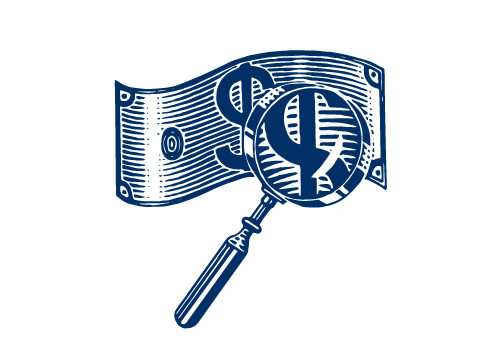Details Are Part of Our Difference
Embracing the Evidence at Anheuser-Busch – Mid 1980s
529 Best Practices
David Booth on How to Choose an Advisor
The One Minute Audio Clip You Need to Hear
Category: Planning
Smart Tax Moves in Retirement
 When you’re working, the focus is often on what you earn from your investments. But in retirement, what you keep after taxes can matter even more.
When you’re working, the focus is often on what you earn from your investments. But in retirement, what you keep after taxes can matter even more.
That’s why the order in which you withdraw from your investment accounts can have a meaningful impact. It may influence how much you pay in taxes, how long your portfolio lasts, and even what you’ll pay for Medicare premiums.
Here’s a general framework that financial professionals often consider when building tax-aware withdrawal plans:
- Start with taxable accounts. These are brokerage or investment accounts where taxes have already been paid on contributions. Selling investments from these accounts may trigger capital gains, which are often taxed at lower rates than ordinary income.
- Then consider tax-deferred accounts. Withdrawals from traditional IRAs and 401(k)s are taxed as ordinary income. By spreading these distributions over time, you may reduce the chances of being bumped into a higher tax bracket later.
- Preserve Roth IRAs for later. Roth accounts grow tax-free, and withdrawals are generally tax-free in retirement. Plus, Roth IRAs aren’t subject to required minimum distributions (RMDs), making them a valuable tool for later-life needs or legacy planning.
A Hypothetical Example
Imagine a retired couple, Elaine and Bill. They have a mix of taxable, tax-deferred, and Roth accounts. After reviewing their situation and long-term goals, a strategy was developed that began with their taxable assets, incorporated modest distributions from their IRA to manage future tax exposure, and left their Roth IRA intact for later.
This approach helped them create a more predictable tax picture and supported their long-term planning objectives.
Tailored to You
Of course, the best strategy depends on your personal circumstances—things like your income needs, tax bracket, account types, family or charitable goals, and how markets perform over time.
That’s why we take a collaborative and proactive approach. At Hill, we coordinate closely with your tax professionals and use evidence-based planning tools to help ensure your withdrawals are as tax-efficient as your investments are intentional.
Want to explore your retirement income strategy or review your current plan? We’re here to help—and to take the long view with you.
Hill Investment Group does not provide tax or legal advice. You should consult with a qualified tax professional regarding your individual circumstances.
Hey Hill! How much cash should I have on hand?

At Hill Investment Group, when a few clients ask the same question, we know others are likely wondering, too. That’s why we created “Hey Hill”—a recurring newsletter feature where we answer common client questions and share our take. Have a question? Email us at service@hillinvestmentgroup.com.
We get this question all the time. While it sounds simple, the answer is personal. That said, we can use evidence and clear thinking to guide a smart approach.
It’s tempting to hold extra cash “just in case.” It feels safe. But over time, too much cash is actually a silent killer. It quietly erodes your purchasing power and your progress. Inflation eats away at its value, and the opportunity cost adds up.
Just like any of your assets, both allocation and location are essential considerations.
Here’s how we think about managing your cash strategically:
Start with the essentials.
Keep 3 to 6 months of living expenses in a high-yield savings account. 12 months if you’re particularly anxious. Think of this as your cushion for the unexpected.
Currently, we recommend our high-yield, easy-to-use cash management tool like this one. With it, we’re helping clients earn around 4% (as of publication) on cash, with no additional cost. This method also comes with enhanced FDIC protection and next-day access when needed—it’s perfect for things like tax payments or big upcoming expenses. It’s an ideal spot for cash you might need soon but still want working for you.
Don’t let cash pile up where it’s not working.
Checking accounts are for paying bills—not stockpiling. Once the essentials are covered, move excess cash into higher-yield options like the above or reallocate it toward long-term growth. Every dollar should be pulling its weight.
Cash in your portfolio? That’s a drag.
Cash is a return-killer in investment portfolios. We keep it low by design. Holding unnecessary cash means giving up potential growth. It’s one of the small but meaningful ways we “pick up pennies” for our clients without increasing risk.
The goal isn’t zero cash—it’s the right amount in the right place.
We’ll help you strike that balance so you’re confident, covered, and focused on taking the long view.
Hey Hill,
At Hill Investment Group, we’ve found that when a few clients ask similar questions, many more likely share the same curiosity. To better serve you, we’ll periodically feature this “Hey Hill” segment in our newsletter, addressing common client questions and explaining our perspective. To submit questions for future newsletters, email us at service@hillinvestmentgroup.com.
Tax season always feels like a scramble. Are there things we (or you) can be doing throughout the year to make it easier – and smarter?
At Hill Investment Group, we believe taxes aren’t just a once-a-year concern. They’re a year-round opportunity. While most people only think about taxes in the spring, we’re building strategies into your plan every day—so you’re not just reacting in April, you’re planning ahead with purpose.
Markets move. Headlines shift. But one thing we can control is how efficiently your portfolio is managed from a tax perspective. It’s a key part of Taking the Long View, helping you keep more of what you earn—not just this year, but every year.
How We Build Tax Efficiency into Your Plan
- Strategic Asset Location – Some investments generate more taxes than others, and where you hold them matters. We structure your portfolio to keep tax-inefficient assets in tax-advantaged accounts, reducing unnecessary tax drag.
- Tax-Loss Harvesting – When the opportunity arises, we strategically offset gains with losses—lowering your taxable income without disrupting your investment strategy.
- ETF Investing – ETFs (Exchange-Traded Funds) allow investors to defer most, if not all, capital gains taxes until they sell, helping avoid surprise tax bills.
- Tax-Advantaged Accounts – From IRAs and Roth conversions to HSAs, we help you maximize the long-term tax benefits of these accounts.
- Charitable Giving Strategies – Tools like donor-advised funds, qualified charitable distributions (QCDs), and appreciated stock donations allow you to give while staying tax-smart.
- Estate & Gifting Strategies – Thoughtful wealth transfer planning helps minimize estate taxes and ensures your legacy is passed on efficiently.
Making Tax Season Easier
Beyond these long-term strategies, we make tax season seamless by preparing tax packets with key reports and details your CPA needs. Because we work closely with your tax team, we help ensure that your investment and tax strategies are always aligned.
If you have questions about how tax planning fits into your financial picture, we’re here to help.
Taking the Long View means thinking ahead—about taxes and beyond.


